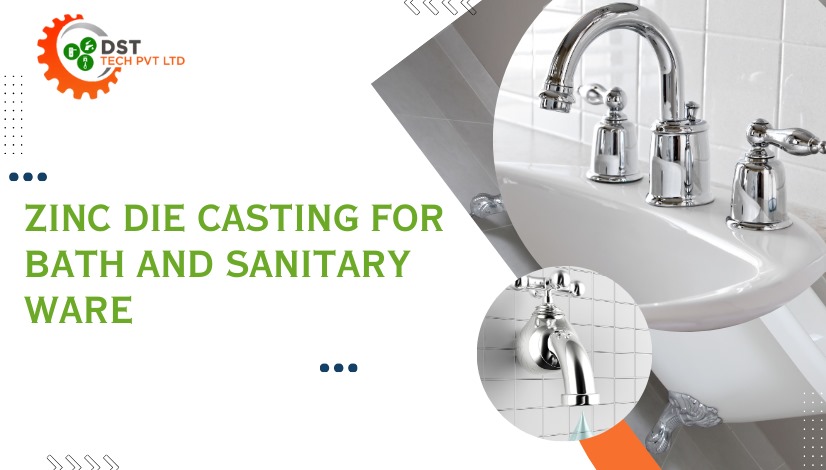In the world of bath and sanitary ware, durability and quality are paramount. Consumers and manufacturers alike seek materials and processes that ensure long-lasting, reliable products. Zinc die casting has emerged as a leading method in this sector, providing numerous benefits that enhance the quality and durability of bath and sanitary ware. This post explores the advantages of using zinc die casting and delves into the process that makes it an ideal choice for bath products.
The Benefits of Using Zinc Die Casting in Bath and Sanitary Ware
Zinc die casting offers a range of benefits that make it an excellent choice for manufacturing bath and sanitary ware. These advantages include:
- High Strength and Durability: Zinc die-cast components are known for their exceptional strength and durability. This makes them ideal for bath and sanitary ware, which must withstand frequent use and exposure to moisture.
- Corrosion Resistance: Zinc inherently resists corrosion, ensuring that die-cast components maintain their integrity and appearance even in humid and wet environments typical of bathrooms.
- Precision and Detail: The die-casting process allows for high precision and intricate detailing. This is particularly important for bath and sanitary ware, where components often need to fit together seamlessly and function flawlessly.
- Smooth Surface Finish: Zinc die casting produces components with a smooth surface finish, which is not only aesthetically pleasing but also easier to clean and maintain. This is crucial for maintaining hygiene standards in bathrooms.
- Cost-Effectiveness: The efficiency of the die-casting process makes it cost-effective for large-scale production. Manufacturers can produce high volumes of components with consistent quality, reducing overall production costs.
- Versatility: Zinc die casting can produce a wide variety of shapes and sizes, making it versatile enough to create everything from faucet handles to intricate showerhead components.
The Process of Zinc Die Casting for Bath Products
Understanding the zinc die-casting process helps highlight why it is so effective for creating high-quality bath and sanitary ware. Here is an overview of the key steps involved:
- Mold Preparation: The process begins with the preparation of a mold or die, typically made from steel. This mold is designed to create the desired shape of the bath product component.
- Melting and Injection: Zinc alloy is melted in a furnace and then injected into the mold under high pressure. The high pressure ensures that the molten zinc fills every cavity of the mold, capturing fine details and producing a precise shape.
- Cooling and Solidification: Once the mold is filled, the zinc is allowed to cool and solidify. This cooling process is rapid, enabling quick production cycles.
- Ejection and Trimming: After solidification, the mold is opened, and the die-cast component is ejected. Excess material, known as flash, is trimmed away to ensure a clean, finished product.
- Finishing and Inspection: The final step involves finishing processes such as machining, polishing, and coating to enhance the component’s appearance and functionality. Each component undergoes rigorous quality inspection to ensure it meets the required standards.
Zinc die casting stands out as a superior manufacturing process for bath and sanitary ware, offering unmatched strength, durability, and precision. Its ability to produce high-quality components efficiently and cost-effectively makes it a preferred choice for manufacturers looking to deliver the best products to their customers.
Experience the excellence of zinc die casting for your bath and sanitary ware needs. Contact DST Tech today to discover how our state-of-the-art solutions can enhance the quality and durability of your products, ensuring satisfaction and reliability for your customers.

